VR Development – The Ultimate Guide before beginning your VR project

Remember that feeling of sheer wonder the first time you put on a headset and were truly somewhere else? That magic is at the heart of VR development, and it’s no longer just for games—it’s a powerful business tool transforming how we train employees, design products, and connect with customers. If you’ve been curious about how to harness this potential for your own ambitious project, navigating the world of VR technology is your first step. This guide will show you exactly how to take that step, from the first spark of an idea to a finished product that puts you ahead of the curve.
What is VR?
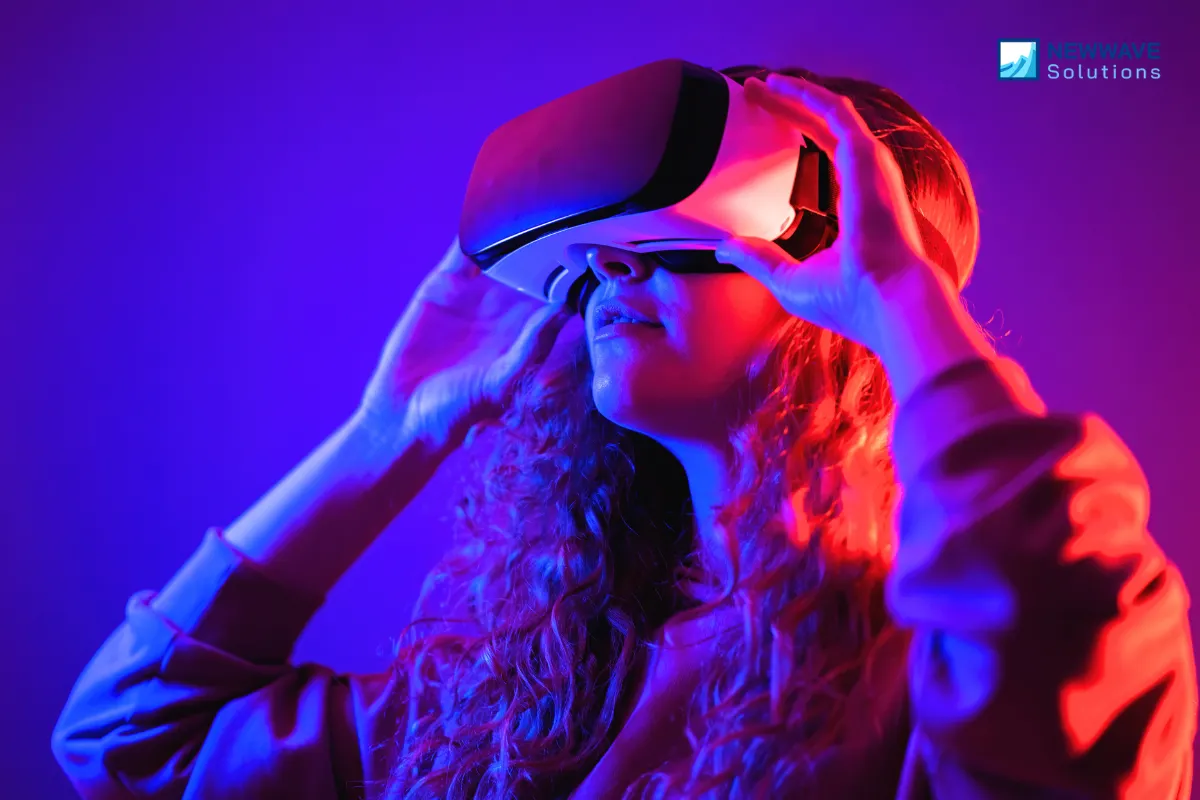
Virtual Reality (VR) is a computer-generated environment that completely replaces the real world, allowing users to interact with 3D spaces through specialized headsets and controllers. Unlike watching a movie or playing a traditional video game, VR places you inside a digital world where you can look around, move, and interact with objects as if they were physically present. This technology represents a revolution in how we interact with computers and digital information. Instead of looking at a screen in front of us, we are inside the experience. This shift is transforming entertainment, education, training, and design, offering a new level of understanding and engagement that flat screens simply cannot match.
VR development is the process of creating these immersive virtual experiences. It involves designing, building, and testing software applications that generate a believable, interactive world for users to explore. Think of it like building a video game, but with a paramount focus on the user’s first-person perspective and sense of presence. It combines creative storytelling, 3D design, sound engineering, and complex programming to trick the human brain into accepting the virtual world as real.
For example, a VR development team creating a virtual showroom must not only model cars in 3D but also program how the car door opens when the user’s virtual hand grabs the handle, and how the engine sounds change as the user moves around it. This intricate blend of art and science is what makes VR so powerful.
Get to know VR vs. AR vs. MR vs. XR
With so many “R” acronyms, it’s easy to get confused, so understanding the distinctions between these immersive technologies is crucial for choosing the right approach for your project. While often used interchangeably, Virtual Reality (VR), Augmented Reality (AR), Mixed Reality (MR), and Extended Reality (XR) represent different approaches to blending digital content with our physical world:
- Virtual Reality (VR): A fully immersive digital experience that transports you to a computer-generated world by blocking out your physical surroundings—like exploring a fantasy game on a Meta Quest headset.
- Augmented Reality (AR): Overlays digital elements—such as images or information—onto the real world via devices like smartphones or smart glasses, as seen in apps like Pokémon Go or IKEA’s furniture placement tool.
- Mixed Reality (MR): A blend of physical and digital worlds where virtual objects interact in real time with the real environment—imagine a holographic ball bouncing off your actual table using Microsoft HoloLens.
- Extended Reality (XR): An umbrella term encompassing all immersive technologies—VR, AR, and MR—that merge real and virtual environments in various ways.
For a clearer view of how these technologies differ, see the comparison table below:
| Technology | Immersion Level | User Experience | Example Device | Example Use Case |
|---|---|---|---|---|
| VR (Virtual Reality) | Fully Immersive | User is completely in a digital world | Meta Quest, Valve Index | Gaming, Flight Simulators |
| AR (Augmented Reality) | Partially Immersive | Digital overlays on the real world | Smartphones, Google Glass | Pokémon Go, Navigation apps |
| MR (Mixed Reality) | Merged Reality | Digital objects interact with the real world | Microsoft HoloLens | Virtual prototyping, remote assistance |
| XR (Extended Reality) | Umbrella Term | Encompasses all of the above | N/A | The entire industry |
The choice between these technologies depends on your specific goals. VR works best when you need complete control over the user’s environment, such as training scenarios or entertainment experiences. AR excels at enhancing real-world activities with additional information or virtual objects. MR provides the most sophisticated interaction possibilities but requires more complex development and expensive hardware.
Why Choose VR Development for Your Business?
The VR market is projected to reach $87 billion by 2030, with industries from healthcare to entertainment rapidly adopting this revolutionary technology. Companies investing in VR development services are seeing remarkable returns through enhanced customer experiences, reduced training costs, and innovative product demonstrations. This technology offers businesses unprecedented opportunities to transform customer experiences, reduce costs, and gain competitive advantages in rapidly evolving markets. By creating immersive digital experiences, companies can solve traditional business challenges in innovative ways while building stronger connections with customers and employees:
1. Optimize Customer Experience
VR transforms passive audiences into active participants by creating deeply emotional and memorable experiences that forge a stronger brand connection than any advertisement or video ever could. Instead of just seeing a product on a website, customers can step inside a virtual showroom to explore a life-sized car, customize its features in real-time, and even take it for a test drive on a scenic road—all from their living room. This “try before you buy” level of engagement dramatically reduces purchase hesitation, builds immense brand loyalty, and turns satisfied customers into powerful brand advocates who are eager to share their unique experience with others.
2. Safer and Smarter Training
VR training development allows for the mastery of high-stakes skills in a zero-risk environment, drastically reducing the potential for costly errors, accidents, and resource waste associated with traditional training methods. Surgeons can rehearse a complex procedure dozens of times, making mistakes and learning from them without ever touching a real patient.
Similarly, airline mechanics can practice repairing a jet engine or factory workers can learn to operate dangerous machinery, all within a perfectly simulated digital twin. This not only ensures everyone is exceptionally well-prepared but also slashes costs related to damaged equipment, dedicated training facilities, and trainer time, while simultaneously ensuring compliance and safety.
3. Quicker Prototypes
VR accelerates the design and iteration process by allowing teams to interact with full-scale, photorealistic prototypes long before any physical materials are used, saving immense amounts of time and money. An architect can walk clients through a building’s design to test sightlines and lighting, identifying a fundamental flaw in the floor plan that would have cost millions to fix during construction.
An industrial designer can hold, examine, and stress-test a virtual model of a new product, iterating on its ergonomics and aesthetics in minutes rather than the weeks it would take to 3D print a new model each time. This rapid virtual prototyping leads to a superior final product and a more efficient, cost-effective development cycle.
4. Easy Teamwork
VR shatters the limitations of remote collaboration by creating a shared virtual space where global teams can interact with 3D models and data as naturally as if they were in the same physical room, leading to more innovative and cohesive outcomes. Engineers from the US, Germany, and Japan can stand inside a life-sized 3D model of a new component, pointing out features, making real-time annotations in the air, and collaboratively solving a design problem without the need for expensive travel or the confusion of 2D video calls. This shared sense of presence and the ability to manipulate complex information intuitively breaks down communication barriers, speeds up decision-making, and fosters a truly collaborative spirit that flat screens cannot replicate.
5. Lead the Market
Adopting VR positions your brand as a forward-thinking innovator, differentiating you from competitors and capturing the attention of new customers, top talent, and investors in a crowded marketplace. In a sector where everyone offers similar services, a real estate company that provides immersive virtual tours of unfinished properties or a healthcare provider that uses VR to explain procedures to patients immediately stands out as a modern, customer-centric leader.
This reputation as a pioneer not only drives sales but also attracts ambitious employees who want to work with cutting-edge technology and partners who see your company as a visionary, future-proof investment.
What is VR used for?
VR technology serves diverse applications across industries, transforming how people learn, work, shop, and connect with digital content. From entertainment experiences that transport users to fantastical worlds to practical business solutions that solve real-world problems, VR development continues expanding into new markets and use cases as hardware becomes more accessible and software capabilities advance.
1. Entertainment & Gaming
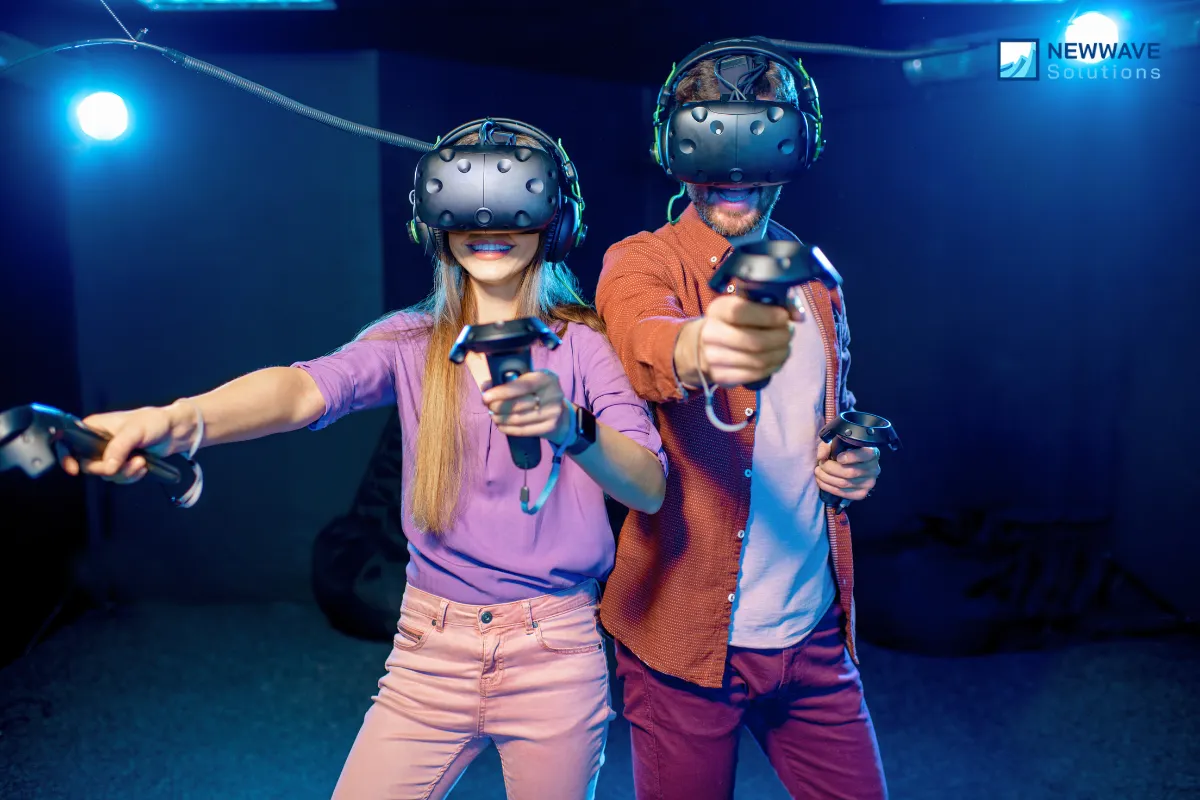
One of the most popular and commercially successful applications of VR that we can see obviously is in the gaming industry. Unlike traditional gaming that relies on screens and controllers, VR games place players directly inside game environments where they can physically duck behind cover, reach for objects, and explore spaces with natural movement.
Core innovate benefits:
- Deep Immersion: It’s the difference between playing a game and living it. Users don’t just control a character; they become the character, with a full 360-degree view and physical interaction.
- Social Connection: Platforms like VRChat and Meta Horizon Worlds allow people to socialize, attend live events, and share experiences as avatars, creating genuine community and presence despite physical distance.
For example: Watching a concert on a screen versus having a front-row seat in a virtual venue, able to turn and chat with the avatar of a friend who is logging in from another country.
2. Training & Education
VR solutions for learning and development transform traditional education by providing hands-on experiences previously impossible in classroom settings. Students can walk through ancient civilizations, manipulate molecular structures, or observe historical events firsthand, making abstract concepts tangible and memorable.
Core innovate benefits:
- Practice Makes Perfect: Learners can repeat procedures infinitely in a safe environment, building muscle memory and confidence.
- Visualizing Complexity: Abstract or complex subjects become tangible. Students can explore the human bloodstream as a red blood cell or walk through a historical event.
For example: Walmart uses VR to train employees for Black Friday crowds, simulating the hectic environment to teach management and customer service skills without real-world chaos.
3. Healthcare
VR development for healthcare software development solutions addresses critical challenges in medical training, patient treatment, and therapeutic interventions. Surgeons practice complex procedures in virtual operating rooms before performing them on patients, building muscle memory and confidence that directly translates to improved patient outcomes.
Core innovate benefits:
- Surgical Planning: Surgeons navigate 3D reconstructions from patient scans to practice operations, identify challenges, and choose the best approach, reducing surgery time and improving safety.
- Therapy & Rehabilitation: It’s used for exposure therapy to treat phobias, distraction therapy to manage acute pain, and gamified physiotherapy to make recovery exercises more engaging and measurable.
For example: VR development helps patients with PTSD relive traumatic memories in a controlled, therapeutic setting to process and overcome them.
4. Business & Design
VR technology revolutionizes how businesses present products, train employees, and collaborate on projects. Retail companies create virtual showrooms where customers can examine products in detail, customize options, and visualize items in their own spaces before purchasing. This approach reduces return rates while expanding market reach beyond physical store limitations.
Core innovate benefits:
- Design & Prototyping: Companies like Airbus use VR to design aircraft cabins, testing ergonomics and passenger flow long before a single piece of metal is cut.
- Sales & Marketing: Real estate agents offer virtual tours of properties under construction, and retailers allow customers to “try” products like furniture in their own homes via AR/VR overlays.
- Data Visualization: Complex data sets can be explored in 3D space, allowing analysts to identify patterns and correlations that would be missed on a 2D screen.
5. Other Applications
VR applications extend across fitness, remote assistance, art, and cultural preservation, creating innovative solutions that address diverse industry challenges while opening new possibilities for human interaction and experience. These emerging applications demonstrate VR’s versatility beyond traditional entertainment and business uses, offering measurable benefits in health, productivity, and cultural access.
Diverse application benefits:
- Fitness and Wellness Innovation: VR fitness applications transform exercise routines into engaging adventures where users burn 300-500 calories per hour while boxing virtual opponents, climbing virtual mountains, or practicing yoga in serene environments that enhance motivation and exercise consistency rates by 60%
- Remote Technical Support: Expert technicians guide field workers through complex repairs using shared virtual spaces where both participants manipulate 3D models and annotations, reducing travel costs by 70% while improving first-time fix rates and minimizing equipment downtime
- Cultural Preservation and Access: Museums create virtual archives that preserve historical artifacts and archaeological sites for future generations while providing global access to collections that physical limitations would otherwise restrict to local visitors
- Artistic Expression Expansion: Artists develop immersive installations that respond to viewer movements and emotions, creating interactive experiences impossible in traditional media while reaching new audiences through virtual gallery spaces
- Therapeutic Applications: Mental health professionals use VR environments for anxiety treatment, meditation therapy, and social skills training that provide controlled, repeatable therapeutic interventions with measurable patient progress tracking
For example, the Louvre’s VR experience allows global visitors to examine the Mona Lisa in unprecedented detail while learning about Renaissance painting techniques through interactive virtual tools. Fitness companies report that users maintain VR exercise routines 3x longer than traditional gym memberships, while cultural institutions increase visitor engagement time by 200% through immersive virtual exhibitions that complement physical museum visits.
When to choose VR development for your business?
Choosing VR development for your business makes sense when you need to create immersive experiences that solve specific problems better than traditional solutions can achieve. VR development is particularly valuable when your business goals involve complex visualization, hands-on learning, emotional engagement, or situations where real-world practice is dangerous, expensive, or impossible.
So consider VR development for your business project if:
- Experiential Marketing is Key: Your product or service is best sold through experience.
- Training is Risky or Expensive: You need to train people for high-risk scenarios or using costly equipment.
- Remote Collaboration is Essential: Your teams need to interact with complex 3D models or data together from different locations.
- Design & Prototyping are Central: You need to iterate on physical designs quickly and cheaply.
- You Aim to Be an Innovator: You want to position your brand at the forefront of technology.
- Target audience adoption of VR technology and openness to immersive experiences
In short, choose VR when you need to show, not tell, practice, not theorize, or collaborate, not just communicate.
Which tools are used in VR development?
The tools for VR development are a combination of powerful game engines, 3D modeling software, and specialized SDKs (Software Development Kits) provided by headset manufacturers. The core of most VR development software is a game engine. These engines provide the foundation for building 3D environments, programming interactions, and deploying the experience to various headsets.
The choice of development tools depends on project requirements, target platforms, team expertise, and budget considerations. Cross-platform development frameworks enable applications to run on multiple VR devices, while platform-specific tools provide deeper integration with individual hardware features. Software development teams often combine multiple tools throughout the development process, using different applications for design, programming, testing, and deployment phases. Let’s take a look a the table of famous tools for VR as below:
| Tool | Type | Best For | Platform Support |
|---|---|---|---|
| Unity | Game Engine | Beginners, AR/VR prototypes, Meta Quest development | High (Quest, PCVR, iOS, AVP*) |
| Unreal Engine | Game Engine | High-fidelity graphics, AAA experiences, Arch Viz | High (PCVR, Quest, iOS) |
| Godot | Game Engine | Open-source projects, custom workflows | Growing (PCVR, Quest) |
| Blender | 3D Modeling | Creating and animating 3D assets (free) | N/A |
| Maya / 3DS Max | 3D Modeling | Professional-grade 3D asset creation | N/A |
| Oculus SDK | SDK | Native development for Meta Quest devices | Quest |
| SteamVR | SDK & Platform | Development for PCVR headsets (Vive, Index) | PCVR |
*AVP = Apple Vision Pro (via Unity PolySpatial)
Pros and Cons of VR
Like any powerful technology, VR comes with its own set of advantages and challenges that are important to consider before starting a VR software development project:
Pros
VR technology delivers unmatched immersion and engagement levels that traditional media cannot achieve, creating emotional connections and memorable experiences that drive customer loyalty and learning retention:
- Unmatched Immersion: VR creates a profound sense of “being there,” leading to incredibly high levels of engagement and emotional connection that are impossible to achieve with traditional media.
- Safe Simulation: It allows for the practice and rehearsal of dangerous, expensive, or rare scenarios in a completely safe and controlled environment, from surgical operations to emergency response drills.
- Visualization of Complexity: VR makes it possible to visualize and interact with complex data, abstract concepts, or large-scale designs in an intuitive, 3D space, leading to better understanding and decision-making.
- Remote Collaboration: It enables teams distributed across the globe to meet and work together in a shared virtual space as if they were in the same room, interacting with 3D models and data naturally.
Cons
VR development faces technical, financial, and user adoption challenges that businesses must address through careful planning and realistic expectations about implementation timelines and costs:
- High Development Costs and Complexity: Creating quality VR experiences requires specialized skills, expensive software licenses, and extended development timelines compared to traditional applications
- Hardware Limitations and Fragmentation: Multiple VR platforms with different capabilities force developers to choose between broad compatibility and platform-specific features, while users need expensive hardware investments
- Motion Sickness and User Comfort Issues: Some users experience nausea, eye strain, or discomfort during VR sessions, limiting session lengths and excluding portions of potential audiences
- Content Creation Challenges: VR development requires new design principles, spatial thinking, and user interface approaches that traditional developers must learn, extending project timelines
- Limited User Base: Despite growth, VR adoption remains relatively small compared to mobile or web platforms, potentially limiting audience reach and revenue potential
- Technical Performance Requirements: VR applications demand high frame rates and low latency to maintain immersion, requiring powerful hardware and careful optimization that increases development complexity
Real Life Successful VR Examples
Leading organizations worldwide have implemented VR development successfully, demonstrating the technology’s potential to solve real business problems while creating engaging user experiences. These case studies showcase diverse applications across industries and provide insights into effective VR implementation strategies.
1. National Geographic Explore VR app
National Geographic transformed traditional documentary viewing into immersive VR adventures that transport users to remote locations like Antarctic glaciers and ancient Mayan ruins. The app combines stunning 360-degree photography with interactive elements that encourage exploration and discovery, achieving significantly higher engagement times compared to traditional video content while strengthening emotional connections to conservation messages.
2. Google Arts & Culture
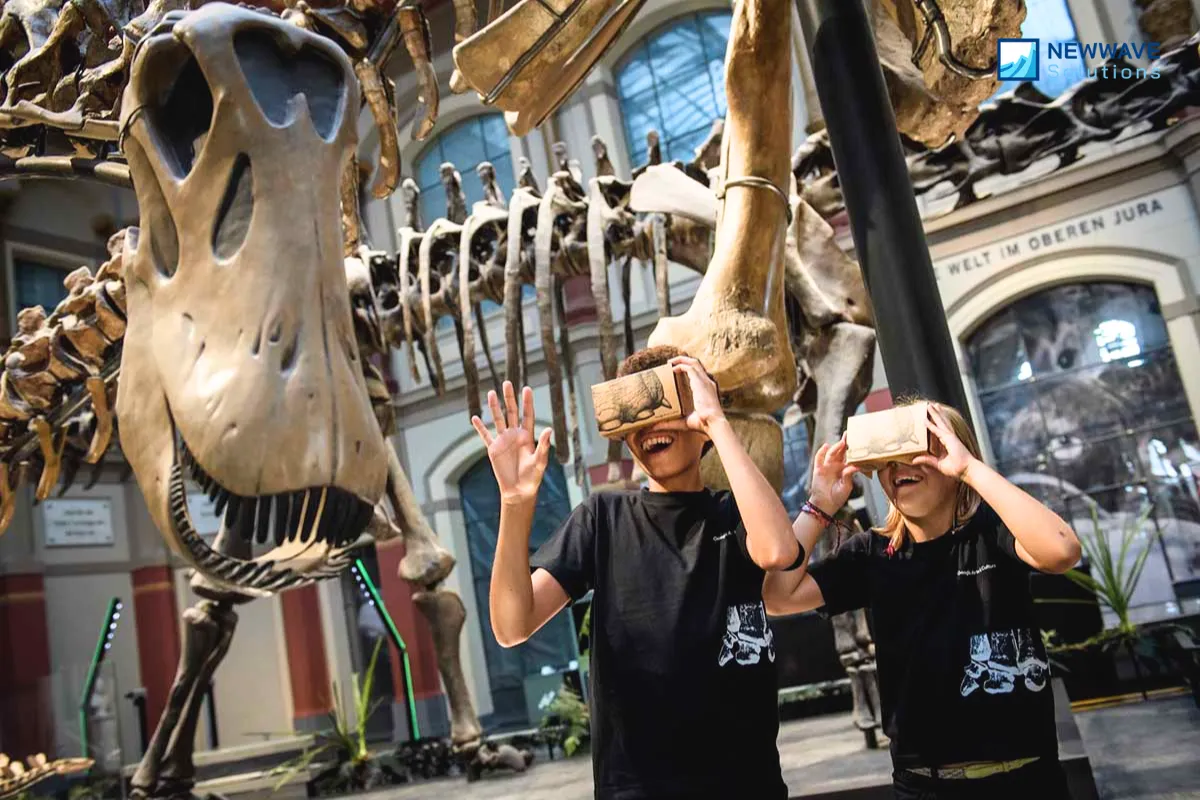
Google Arts & Culture democratizes access to world-class museums through VR experiences that eliminate geographical barriers to art appreciation. Users can walk through the Palace of Versailles and examine Van Gogh paintings in microscopic detail, often spending more time engaging with individual artworks than during physical museum visits while accessing educational context that enhances understanding and cultural appreciation.
3. Microsoft’s Minecraft Education Edition VR
Microsoft leveraged Minecraft’s popularity to create educational VR experiences where students build historical civilizations, conduct virtual chemistry experiments, and solve engineering challenges collaboratively. Teachers report increased student engagement and improved understanding of complex STEM concepts when using VR-enhanced lessons compared to traditional instruction methods, particularly for abstract concepts that become tangible in virtual environments.
4. NASA’s Astronaut Training
NASA uses VR to prepare astronauts for space missions by simulating zero-gravity environments and spacecraft operations without the enormous costs of physical simulator time. Trainees practice spacewalk procedures and emergency scenarios repeatedly, building muscle memory and familiarity with spacecraft layouts that improve mission success rates and reduce errors during actual space operations.
5. U.S. Army’s Synthetic Training Environment (STE)
The U.S. Army developed comprehensive VR training systems that simulate combat scenarios and tactical decision-making in virtual environments. Soldiers practice mission planning and experience realistic battlefield conditions without the costs and risks of live training exercises, while large-scale unit exercises in shared virtual spaces enable coordinated training scenarios too dangerous or expensive to conduct in real life.
How to Get Started with Your VR Development Process?
Beginning your VR development journey requires systematic planning and strategic decision-making to ensure project success and optimal resource utilization. The development process combines traditional software development methodologies with specialized VR design principles and technical considerations unique to immersive experiences.
1. Brainstorm & Strategy
Every successful project starts with a crystal-clear goal. Define what you want to achieve. Is it for training, marketing, or design? Who is your user? Outline the core experience, map user interactions, and establish a realistic budget and timeline. This phase is about answering the fundamental question: “Why VR?” and planning your software development in VR project accordingly.
Tip: Start with a simple, focused experience (a Minimum Viable Product – MVP) rather than an overly complex one. You can always add features later.
2. Choosing the right VR development team
The success of your project hinges on your team. The right partner brings not just technical expertise in how to develop VR software, but also creative insight and project management skills. They can guide you through pitfalls, suggest optimizations, and ensure your vision is realized effectively and within budget. Look for a team with a proven track record, a diverse portfolio, and strong communication skills.
Key considerations for team selection:
- Technical Expertise: Verify experience with your chosen development tools, target VR platforms, and programming languages required for your project’s complexity level
- Portfolio Assessment: Review previous VR projects for quality, performance, and user experience design that aligns with your vision and requirements
- Communication and Collaboration: Ensure team members can explain technical concepts clearly and work effectively with stakeholders who may be unfamiliar with VR development processes
- Scalability and Support: Consider whether the team can handle project growth, provide ongoing maintenance, and adapt to changing requirements throughout development
Insight: Don’t just hire coders, hire the experience. A team that has already launched VR apps will save you significant time and money.
When you need experienced professionals for your VR project, consider leveraging software development services that specialize in immersive technologies and understand the unique challenges of virtual reality application creation. Our hire developer services is built to assess your specific project needs and recommend the perfect technology stack for performance, scalability, and budget.
3. Core Technologies decision
This is where you choose the tech stack based on your project’s goals. Will you use Unity for its broad support and ease of use, or Unreal Engine for its top-tier graphics? Which headset will you target (Quest, PCVR, AVP)? These decisions impact everything from performance to cost.
Recommended technology combinations:
- Enterprise Applications: Unity with C# for frontend VR interfaces connected to Java-based backend services for data processing and business logic integration
- Web-Based Solutions: WebXR frameworks with JavaScript frontends communicating with Java Spring Boot backends for scalable, browser-accessible VR experiences
- Mobile VR Applications: Android native development using Java with OpenGL ES for performance-critical VR applications targeting mobile VR platforms
- Cross-Platform Solutions: Unreal Engine with Java backend integration for applications requiring high-performance graphics and complex server-side processing
Professional hire developers services can provide the specialized talent needed to implement these technology decisions effectively, ensuring optimal performance and maintainability for your VR application.
4. Design & Prototyping
Before full-scale development of VR technology begins, designers create wireframes and storyboards for the experience. Then, a basic interactive prototype is built. This is a crucial step to test the core concept, user flow, and interactions. It allows you to “feel” the experience early on and make necessary adjustments before investing heavily in development, ensuring the final product is user-friendly and intuitive.
Design considerations specific to VR:
- Spatial User Interface Design: Create interfaces that feel natural in 3D space, avoiding traditional 2D design patterns that break immersion
- Comfort and Accessibility: Design experiences that accommodate various user capabilities and prevent motion sickness through careful movement and visual design
- Natural Interaction Patterns: Implement gesture-based and voice-controlled interactions that feel intuitive rather than forcing users to learn complex control schemes
- Performance Optimization: Design visual elements and interactions that maintain required frame rates for comfortable VR experiences across target hardware
5. Development & Testing
This is the phase where the virtual world is built. Programmers code the interactions, 3D artists finalize the assets, and sound designers create the audio landscape. Simultaneously, rigorous testing is constant. Test for performance (maintaining a high frame rate is critical for VR), user comfort, and bugs. This iterative process of development and testing ensures a polished and comfortable final product.
Besides, QA Testing Services become particularly important for VR applications due to the complexity of testing across multiple hardware platforms and the critical nature of comfort and performance requirements.
Tip: Test early and often with people who have never tried the experience before. Their fresh perspective is invaluable for identifying usability issues.
6. Launch and Scale
Once tested and polished, the application is launched on the intended platforms (e.g., Oculus Store, SteamVR, App Store). But the work isn’t over. Gather user feedback, monitor performance, and plan for updates and new content. A successful launch is just the beginning of the product’s lifecycle.
Launch strategy elements:
- Platform Distribution: Choose appropriate app stores and distribution channels that reach your target audience while meeting platform requirements and revenue sharing expectations
- User Education: Provide clear setup instructions, comfort guidelines, and tutorial experiences that help users maximize enjoyment while minimizing technical difficulties
- Performance Monitoring: Implement analytics systems that track user behavior, performance metrics, and comfort indicators to guide future development priorities
- Community Building: Develop user communities and feedback channels that support ongoing engagement and provide insights for application improvements
How can Newwave Solutions empower your VR vision?
At Newwave Solutions, we understand that VR development is more than just coding; it’s about crafting immersive experiences that deliver tangible business results. With over 13 years of experience as a leading software development company in Vietnam, trusted by clients worldwide, we have the expertise to guide you from initial concept to successful launch.
Our experienced developers understand the unique requirements of VR applications, from performance optimization and user comfort considerations to cross-platform compatibility and engaging user experience design. We leverage cutting-edge tools and proven methodologies to deliver VR applications that exceed expectations while meeting project timelines and budget requirements.
What can we solve for your VR projects?
- End-to-End VR Application Development: From initial concept and strategy through design, development, testing, and deployment across all major VR platforms
- Cross-Platform Solutions with VR: Creating applications that work seamlessly across Meta Quest, Apple Vision Pro, PCVR systems, and emerging VR hardware platforms
- Custom VR Training and Education Solutions: Developing immersive learning experiences that improve knowledge retention and reduce training costs across industries
- VR Business Application Development: Building virtual showrooms, collaborative workspaces, and customer experience applications that drive revenue growth
- Performance Optimization and User Comfort: We ensure smooth, comfortable VR experiences through advanced optimization techniques and thorough user experience testing
We don’t just build apps, we build solutions. Being your partner means we’ll involve to understand your business objectives and create a VR experience that meets them, whether it’s for VR solutions for learning and development, marketing, design, or beyond.
Ready to explore how VR can transform your business? Contact Newwave Solutions today to discuss your VR development requirements and discover how our expertise can accelerate your virtual reality project success. Our team is prepared to guide you through every step of the VR development process, from initial strategy and planning through final deployment and ongoing support.
To Quang Duy is the CEO of Newwave Solutions, a leading Vietnamese software company. He is recognized as a standout technology consultant. Connect with him on LinkedIn and Twitter.

Read More Guides
Get stories in your inbox twice a month.
Let’s Connect
Let us know what you need, and out professionals will collaborate with you to find a solution that enables growth.
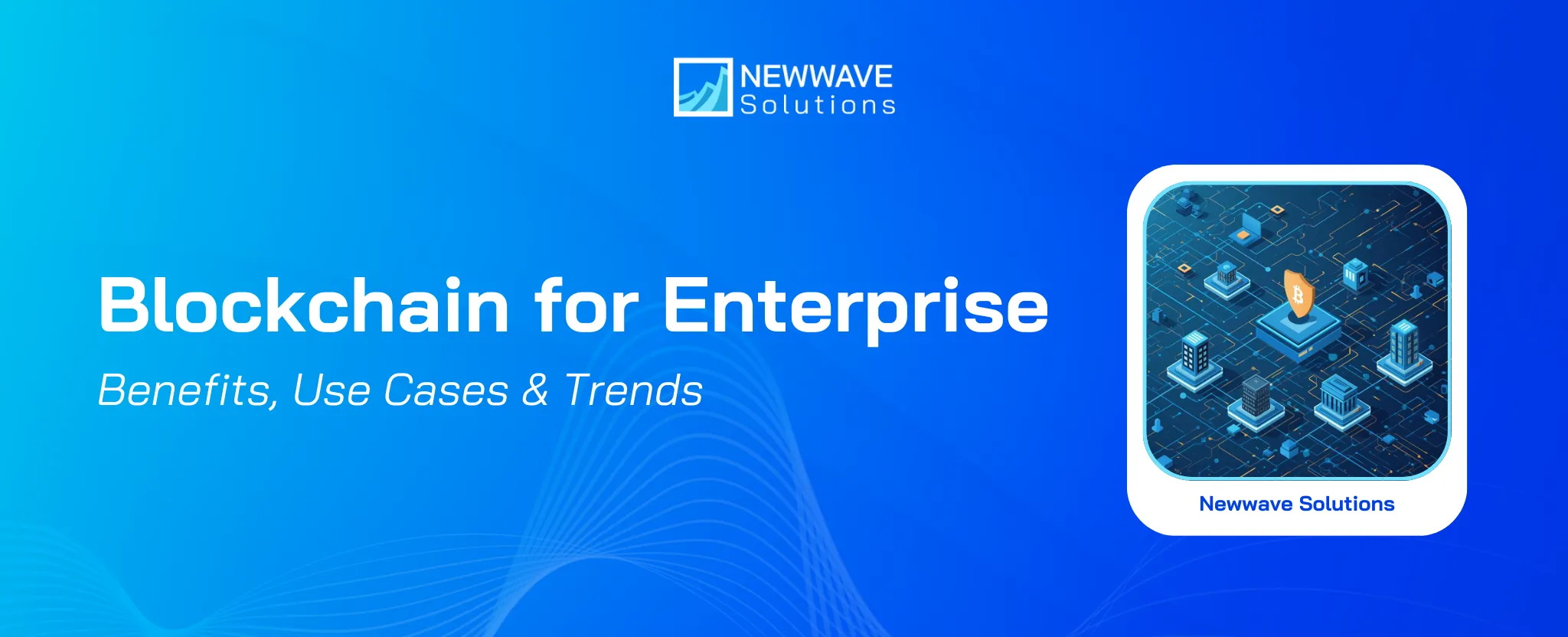

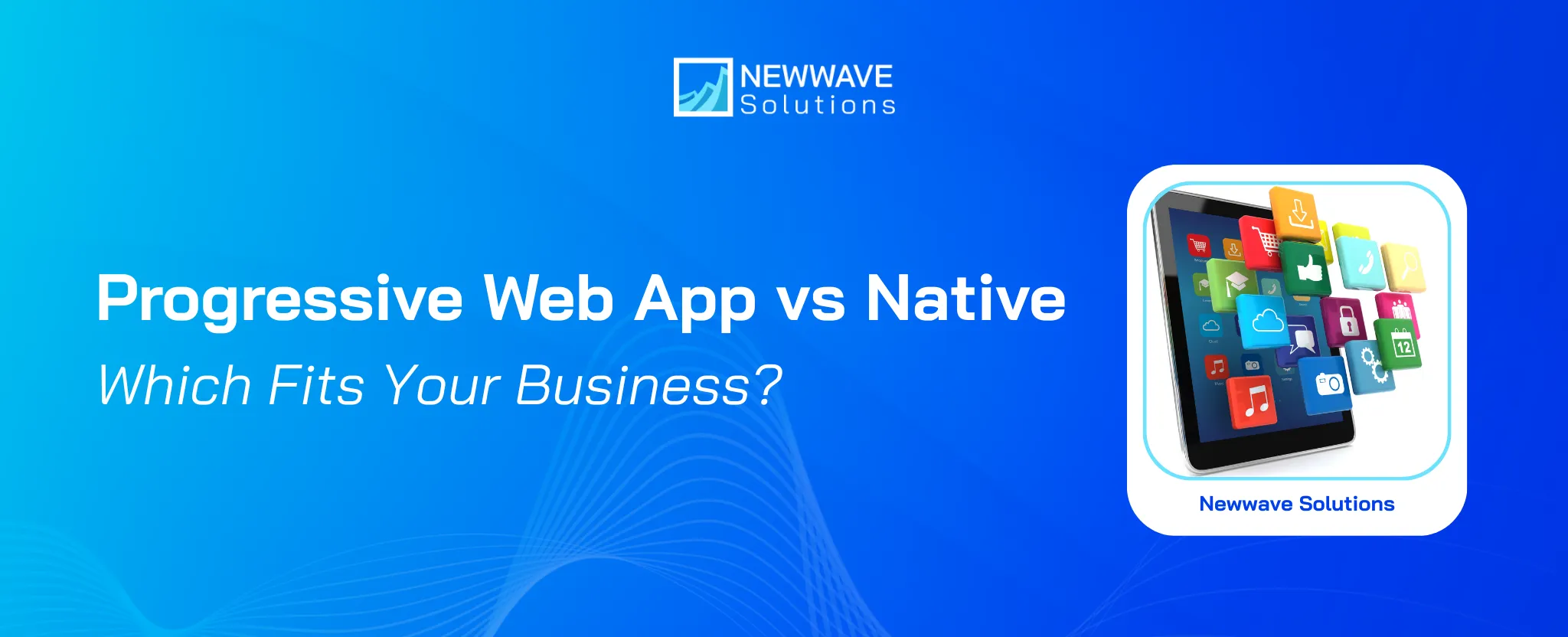

Leave a Reply